Mimih | Mimi | Mimi Spirits
Mimih are often depicted in aboriginal bark paintings. Most Mimi are on paintings from Oenpelli in Western Arnhem Land and Crocker Island. The belief in Mimih is thousands of years old. Mimi are on Cave walls and in rock shelters as well as on Bark. In fact, some of the oldest cave paintings in Western Arnhem Land are of these figures running and hunting
Mimih spirits are often painted as extremely thin human-like beings. They are extremely flexible and agile and small. They are often depicted wearing headdresses and carrying weapons and tools.
If you have a bark painting depicting Mimih spirits to sell please contact me. If you just want to know what your bark painting is worth please feel free to send me a Jpeg. I would love to see it.
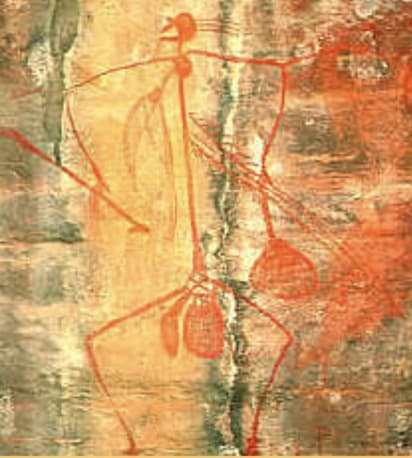
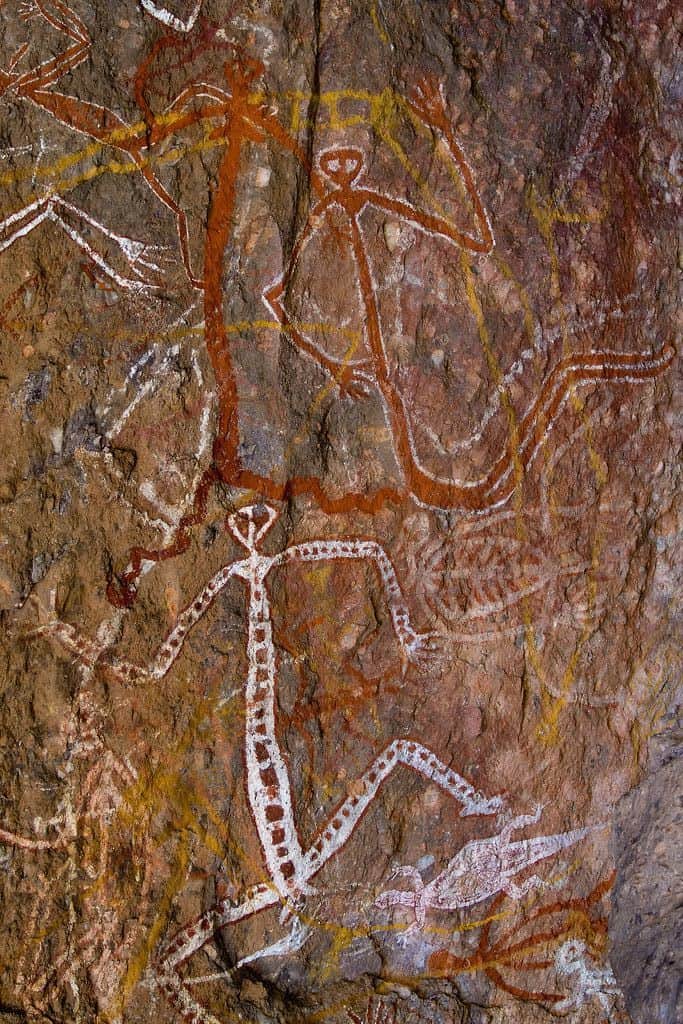
What are Mimih / Mimi
Mimih are supernatural beings that used to live in the rocky country of western Arnhem Land. They are so thin and light that a strong wind could blow them over. They are often referred to as spirits even though they are of flesh and blood.
Mimi are credited with instructing the first aboriginal people with knowledge. They taught aboriginal people how to survive in the rocky environment of the Arnhem Land plateau. They taught the first aboriginals how to hunt and butcher game and also how to dance, sing and paint. It was these spirits who turned aboriginals into civilized people. The song and dance style of western Arnhem Land Aboriginals is still known today as Mimih style.
The people of western Arnhem Land believe that Mimi spirits lived in a social organization similar to Aboriginal people. They believe that their society existed before humans.
Mimih also had supernatural powers. They were able to levitate themselves when painting on cave ceilings. There are numerous legend stories about interactions between Mimi and humans.
The Mimih were fun-loving and enjoyed sex and dancing but were also mischievous. They were capable of being misleading and even of kidnapping or killing people. If befriended though they could share their magic. Aboriginal sorcerers who had befriended them often had powers given to him. These sorcerers had gained this mythical knowledge and powers while spending time in Mimi camps.
Could Mimih have existed
Could a small lightweight humanoid have been living alongside Aboriginals in Australia 40,000 years ago?
At first, this seems outrageous but it may not be as far-fetched as it first sounds.
50,000 years ago a small (3 ft 6 in) archaic human weighing only 25 kilograms. lived of Flores in Indonesia. Homo floresiensis was living contemporaneously with modern humans.
We know Homo floresiensis was intelligent hunting, with napped tools and using fire. We also know Homo floresiensis was capable of traveling across sections of the open ocean.
Homo floresiensis was traveling across sections of the ocean before modern humans. it is possible they may also have made it to Australia via New Guinea and the then Torres Strait land bridge.
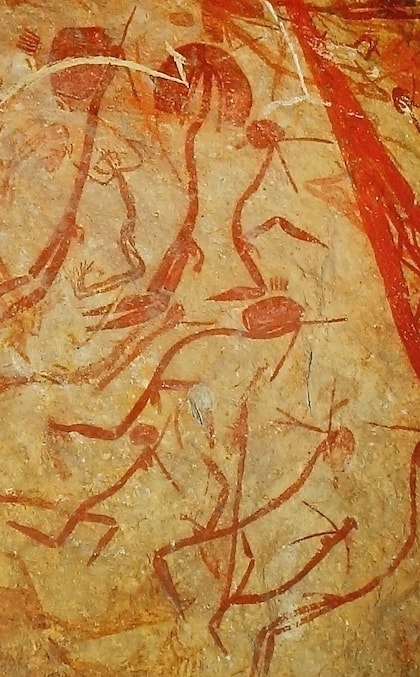
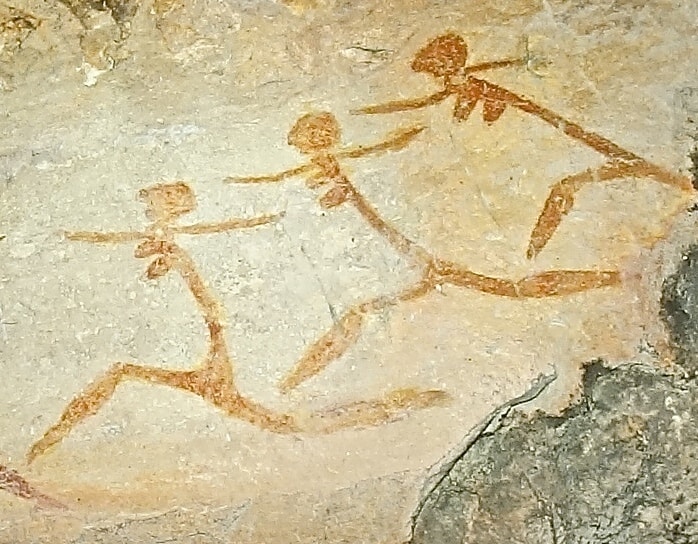
Mimih and Art
The oldest known accurately dated rock art in the world is in Sulawesi Indonesia and is 35,500 years old. The implication is revolutionary. These artworks completely destroy the previously eurocentric origins of art. It is now clear that Indonesian and Australian rock art could well prove to be the vital link to the moment when the human mind with a capacity for imagination and symbolism switched on.
The Aboriginal oral history of Mimih indicates an even more intriguing possibility. The consistent element of Mimih stories is that Aboriginal people learned to paint, dance, and sing from the Mimih. Did mankind become more human due to our interactions with Mimih.
Mimi in Aboriginal Art
Auction houses tend to label any non-human figure on a bark painting as a Mimih. This is often incorrect as other supernatural aboriginal beings had human-like forms. Good examples are Namarnde Namarrkon and Namorrordo. These spirits have semi-human forms but are completely different creatures.
Mimi are traditionally only depicted in Western Arnhem Land and on Crocker Island art.
Mimih by the unknown artists
Some of the greatest depictions of these beings are by unknown artists. In this example, they are obviously dancing. The pure freedom of movement coupled with the almost alien forms I think makes this one of greatest barks.
The oversized heads and slender bodies are right out of a Science Fiction film, painted before that genre even existed,
Great art is not always by a known artist.
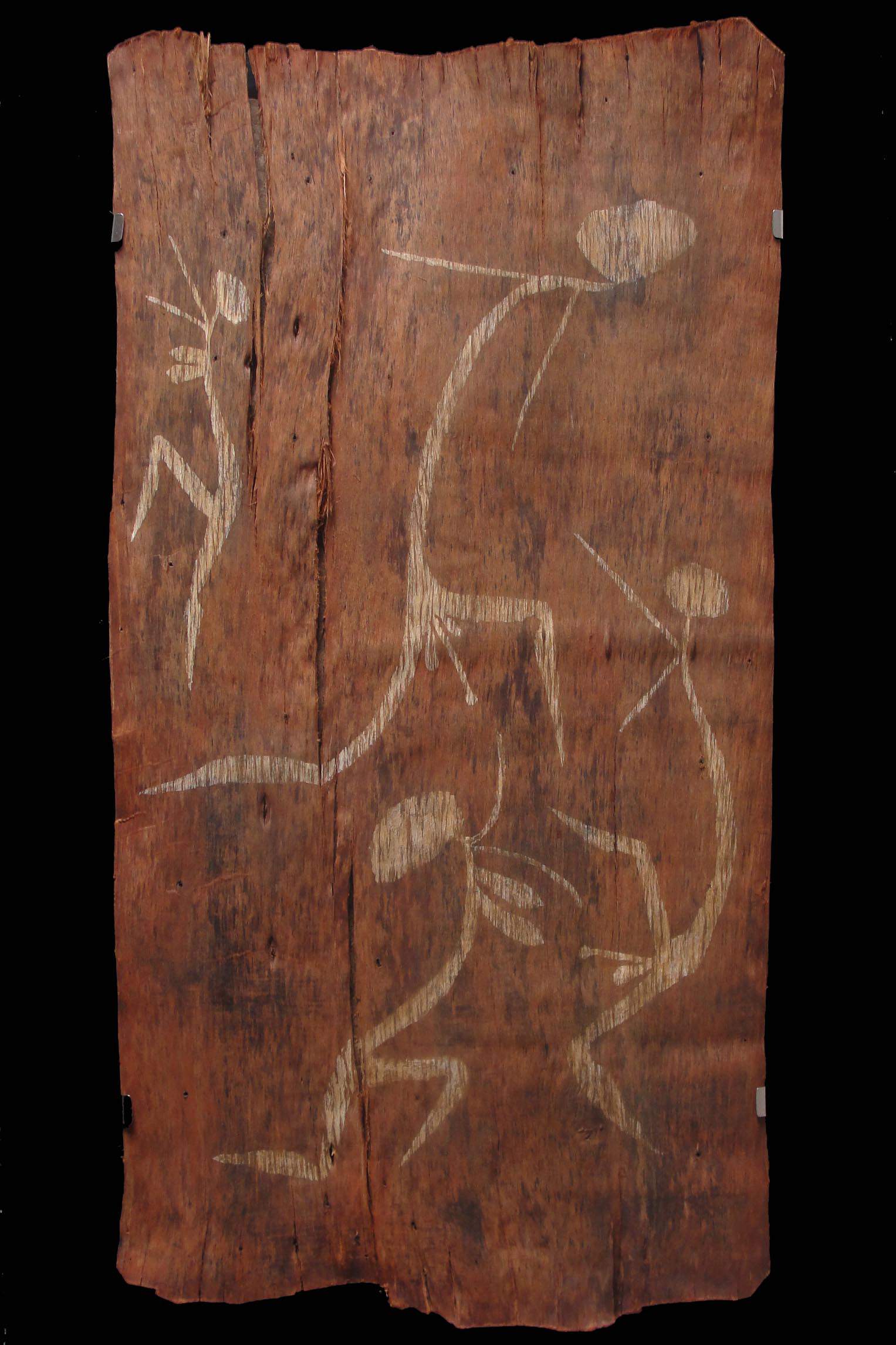
Mimih Artists
Djambalula
Djambalula depictions of Mimi spirits are powerful in their simplicity. The faces of his beings have an otherworldly appearance. Djambalula painted in rock shelters as well as on barks.
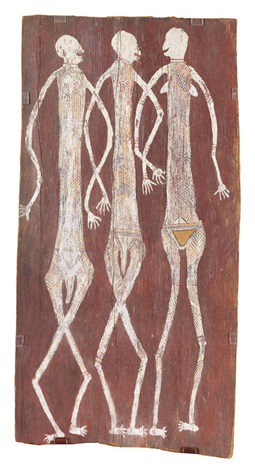
January Nanganyari
Nanganyari often depicts the friendly but mischievous side of Mimi. He depicts them waving and appearing as friendly mischievous beings.
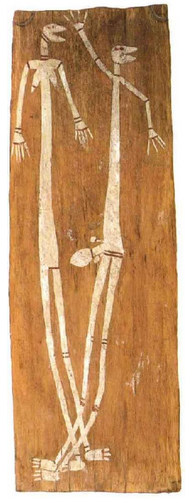
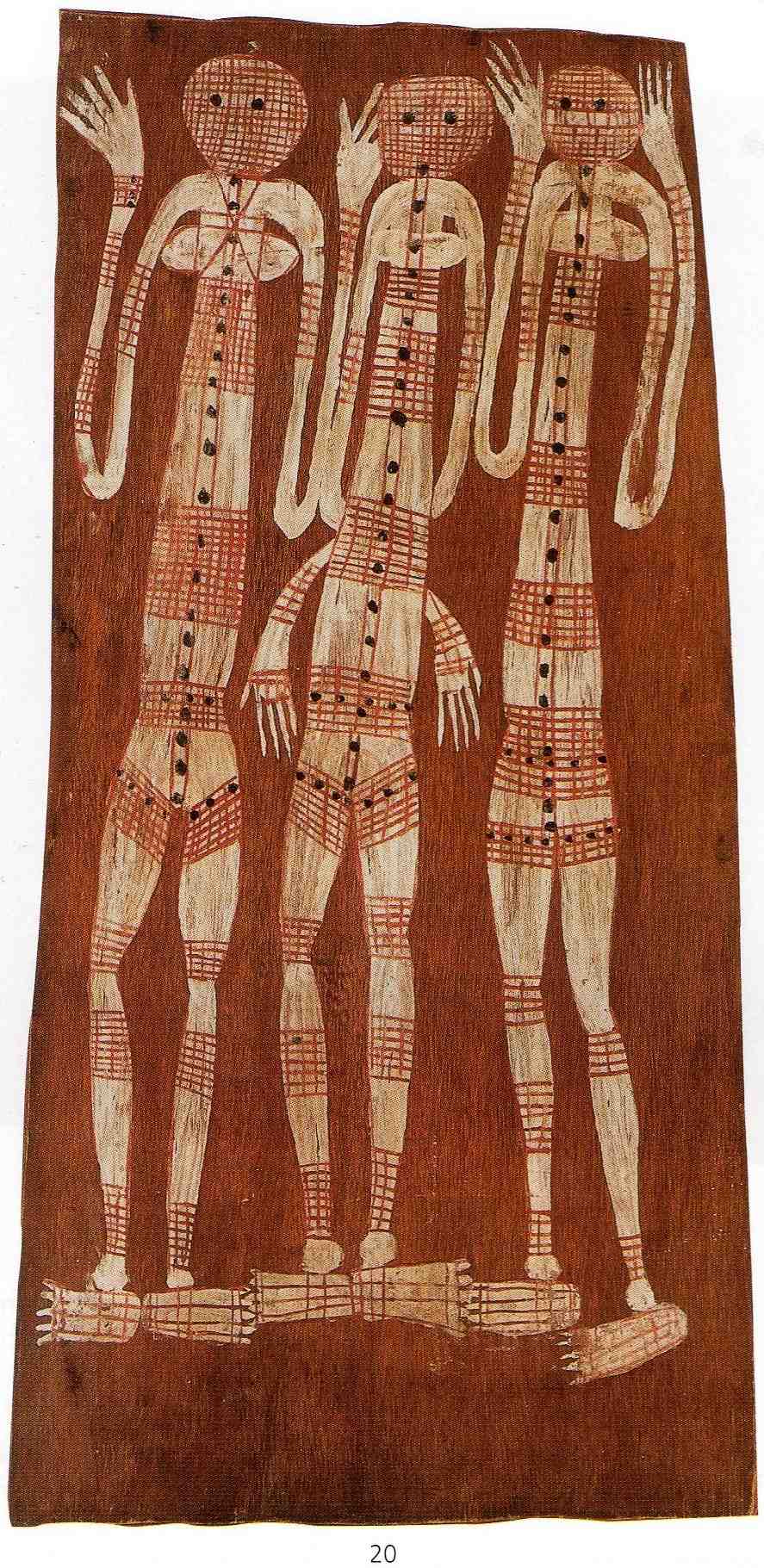
Jimmy Midjawmidjaw
Mijau mijau was a crocker island artist and his Mimih spirits often have impossibly long thin arms.
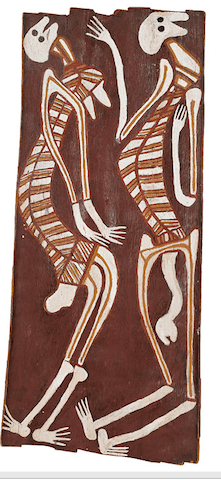
Paddy Compass Namatbara
Namatbara has some of the most dynamic and otherworldly depictions of Mimi. He is not shy about depicting their obvious sexuality, Namatbara also painted Maam spirits but these Maam spirits are usually shown with an unnatural number of arms or legs.
Yirawala
Yirawala is the most famous of Arnhemland painters and he often depicts Mimih. They are fluid and graceful but lack the rawness of some other artists. The long thin bodies do not always suit his majestic rarrk.
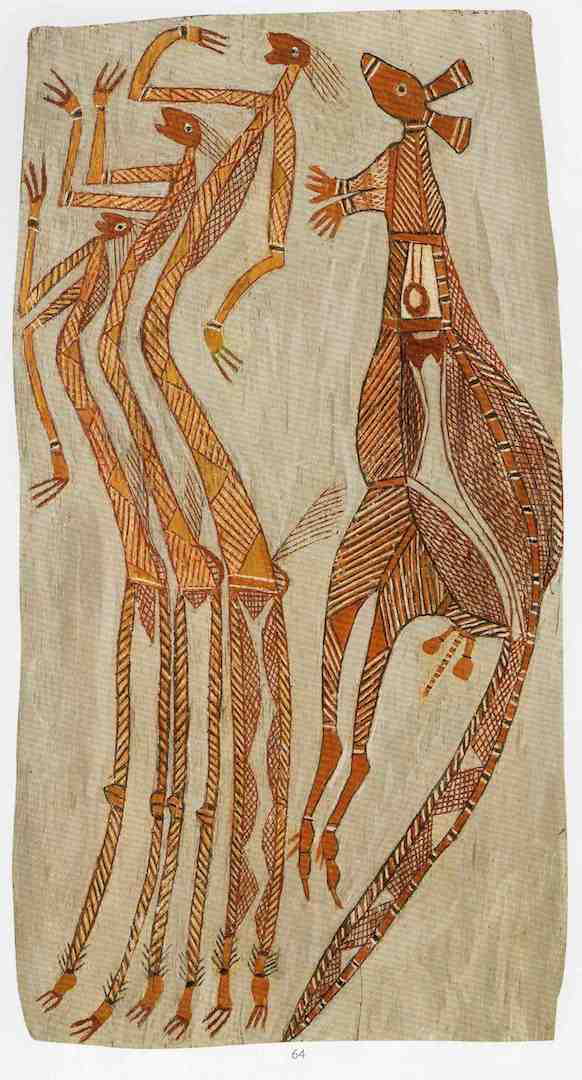
Dick Murramurra
Dick Murramurra depicts Mimih hunting. This relates to the story of a hunter that spent a night in a Mimi camp. The wives of the Mimih hunter tried to seduce him but he escaped.
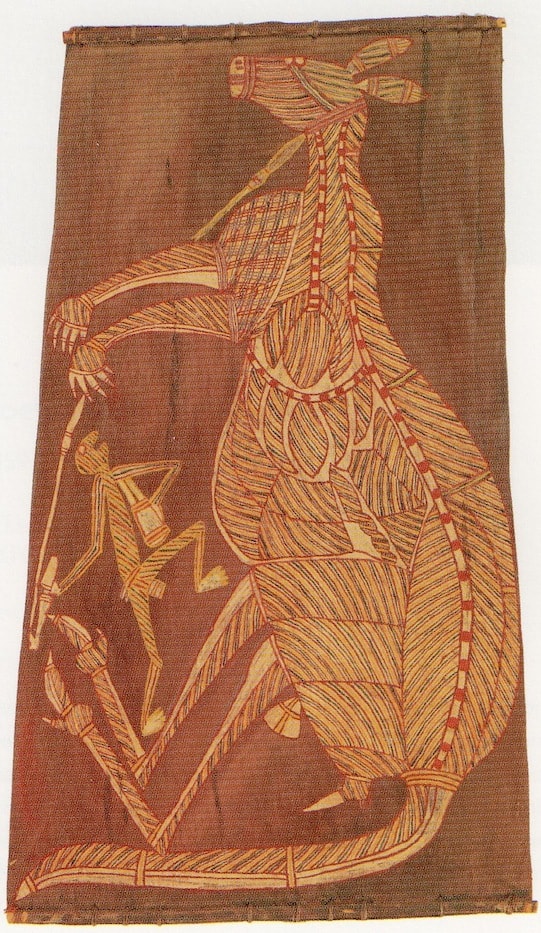
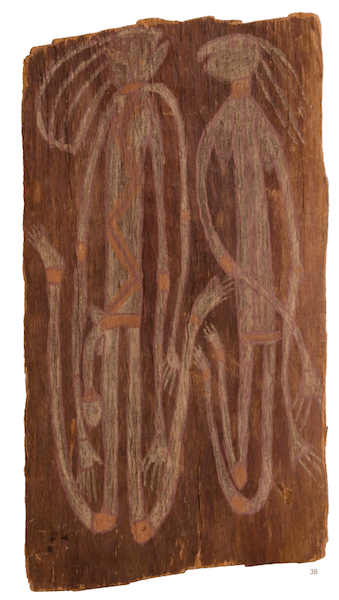
Spider Namirrki Nabuna
Spider Namirrki painted in rock shelters and on bark. He is often mistaken for a Crocker island artist due to the fluidity of his figures.
His Mimi are often depicted with flowing arms impossibly bending legs and exaggerated genitalia.

Crusoe Kuningbal
Crusoe Kuningbal is one of the few artists to depict Mimih as sculpture. These sculptures were made for sale and not for a ceremony.
Aboriginal sculpture including examples by Kuningbal are collectible in their own right

Mick Kubarrku
Mick Kubarrku both painted and sculpted images of Mimih spirits.
His barks were more traditional but his sculptures just as collectible.
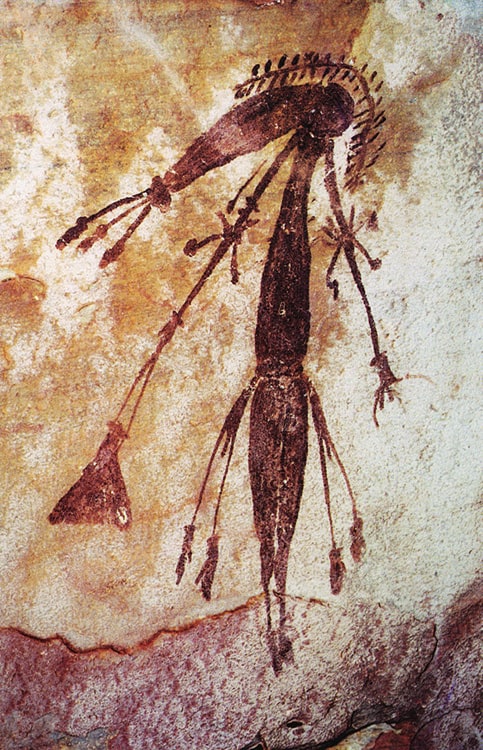
Gwion or Bradshaw figure
All images in this article are for educational purposes only.
This site may contain copyrighted material the use of which was not specified by the copyright owner.
